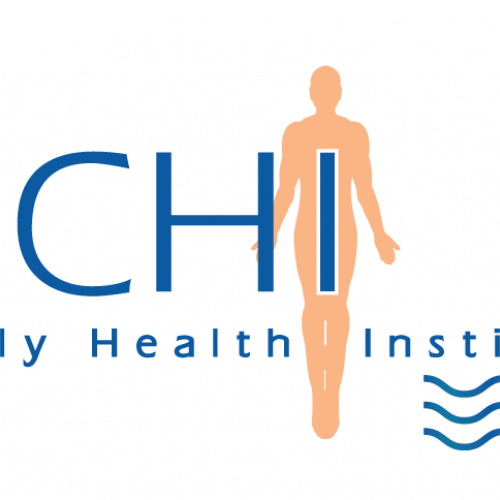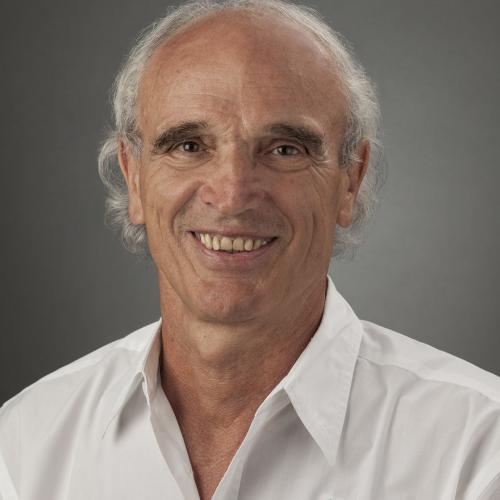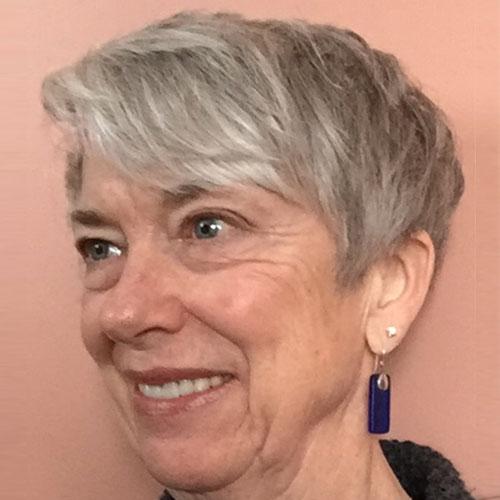In Brain 4 you'll deepen the skills you've already studied and have been practicing. You will learn how to work with and release restrictions in several new areas of the brain and spinal cord, especially cranial nerves, nuclei and ganglia and dorsal root ganglia.
-
Early embryological Brain relationships
-
Fluid Field Regulation (FFR)
-
Choroid Plexi (CP): 3rd and 4th ventricle
-
Cranial Nerve Nuclei: clinical applications
-
Cranial Nerve Ganglia: clinical applications
-
Dorsal Root Ganglia (DRG) of the Spinal Cord and its pathologies
-
Periaqueductal Gray Matter (PAG)
-
Work within the 6 layers of the Brain
-
Negative Memory "eraser"
-
New protocol for the Brain and Spinal Cord
Class length 3 days
Conflict of Interest: All classes presented by Chikly Health Institute have no financial conflict of interest.
CHI is not sponsored by outside organizations or corporations.
Please read "Our Policies" for more information: https://chiklyinstitute.com/Policies
• Contact Continuing Education (CE) Hours Total: 18 CEUs for massage therapists - NCBTMB Approved Provider # 451238-10
NCBTMB CEUs are accepted in every US state for NCBTMB certification renewal.
Most states accept NCBTMB for license renewal but not all. We are also approved for NY state.
Please look here for more information: http://www.ncbtmb.org/map/requirements-map.
Because certification and license renewal policies vary from state to state, it's important for you to make sure the CEUs are accepted wherever you practice. Therefore, please be aware that this information may not apply in your state.
Check your state’s website at: http://www.ncbtmb.org/regulators/state-info.
Alberta massage therapists: Members of the RMTA will receive 15 Continuing Education Credits (CEC) upon the submission of a certificate of completion for each course.
• 18 hours approved by the Massage Therapy Association of Manitoba, Canada (MTAM)
• 18 hours approved by the Certified Registered Massage Therapy Association of Alberta, Canada (CRMTA)
We are in the process of providing Continuing education for numerous other professions. Please check back to this page later as we will post all updates.
-
Early embryological Brain relationships
-
Fluid Field Regulation (FFR)
-
Choroid Plexi (CP): 3rd and 4th ventricle
-
Cranial Nerve Nuclei: clinical applications
-
Cranial Nerve Ganglia: clinical applications
-
Dorsal Root Ganglia (DRG) of the Spinal Cord and its pathologies
-
Periaqueductal Gray Matter (PAG)
-
Work within the 6 layers of the Brain
-
Negative Memory "eraser"
-
New protocol for the Brain and Spinal Cord
COURSE SCHEDULE (Subject to change)
Day One:
8:30 Registration
9:00 - 11:00 Introduction, teachers, students, teaching assistants and facilitator. Teaching material
Fluid Field Regulation (FFR)
11:00 - 11:15 Break / group discussion
11:15 - 12:30 Embryological connections
12:30 - 2:00 Lunch
2:00 - 3:30 Cranial nerves nuclei and ganglia I, II, III, IV
3:30 - 3:45 Break / group discussion
3:45 - 5:30 Cranial nerves nuclei and ganglia V, VI
Day Two:
9:00 - 11:00 Questions and answers
Choroid plexi
11:00 - 11:15 Break / group discussion
11:15 - 12:30 Cranial nerves nuclei and ganglia VII, VIII
12:30 - 2:00 Lunch
2:00 - 3:00 Cranial nerves nuclei and ganglia IX, X
3:00 - 3:30 Periaqueducal Gray Matter (PAG) and Raphe Magnum nuclei
3:30 - 3:45 Break / group discussion
3:45 - 4:45 Working within the 6-layered cortex of the brain
4:45 – 5:30 Finding dominant lesions in the 6 layered cortex (sulci, gyri): fascia and fluid approaches.
Day Three:
9:00 - 10:30 Questions and answers
Cranial nerves nuclei and ganglia XI, XII
10:30 - 10:45 Break / group discussion
10: 45 - 12:45 Case studies
Working within the 6-layered cortex of the brain 2 (cortex “negative memories”)
12:45 - 2:00 Lunch
2:00 - 3:30 Dorsal root ganglia (DRG) and CNS connections
Take home Protocol.
Final questions and answers.
Self-Reflection and identification of changes for practitioner’s practice
LEARNER OBJECTIVES (Subject to change)
- By the end of the 1st day participants will be able to correctly demonstrate on a live person B4 Fluid Field Regulation (FFR) technique
- By the end of the course participants will be able to correctly demonstrate on a live person how to release dysfunction of Cranial nerves nuclei and ganglia I, II, III, IV
- By the end of the course participants will be able to correctly demonstrate on a live person how to release dysfunction of Cranial nerves nuclei and ganglia V, VI
- By the end of the course participants will be able to correctly demonstrate on a live person how to release dysfunction of Cranial nerves nuclei and ganglia VII, VIII
- By the end of the course participants will be able to correctly demonstrate on a live person how to release dysfunction of Cranial nerves nuclei and ganglia IX, X
- By the end of the course participants will be able to correctly demonstrate on a live person how to release dysfunction of Cranial nerves nuclei and ganglia XI, XII
- By the end of the course participants will be able to correctly demonstrate on a live person Brain-Embryological connections technique
- By the end of the course participants will be able to correctly demonstrate on a live person how to release dysfunction of the 6 layered cortex of the Brain
- By the end of the course participants will be able to correctly demonstrate on a live person how to release dysfunction of the Choroid plexi
- By the end of the course participants will be able to correctly demonstrate on a live person how to release dysfunction of the Periaqueducal Gray Matter (PAG)
- Based on a fascia and fluid approach participants will be able by the end of the course to correctly find on a live person a dominant dysfunction of the 6 layered cortex
- By the end of the course participants will be able to correctly demonstrate on a live person how to release dysfunction of dorsal root ganglia
INSTRUCTIONAL METHODS
- Lecture
- Study Guide
- Question & Answer
- Power Point Slides
- Demonstration
- Practice sessions
- Review
B2: Brain Tissue, Nuclei, Fluid & Autonomic Nervous System plus we suggest at least two (2) months of practice after attending B2.
Preparation: Anatomical/Physiological Terms
Be sure you understand the following words and, as applicable, know precisely where these structures are located in the body. For this class it is more important to know the cranial nerve nuclei than the cranial nerve themselves. Pay more attention to cranial nerve XII, XI, X, IX, VII, V, to the following cranial nerve nuclei: hypoglossal, accessory, dorsal vagal, ambiguus, solitarius, trigeminal (spinal, pontine, mesencephalic), facial and finally to the ganglion of the vagus and trigeminal nerve.
We will also see the choroid plexus, 6 layered cortex, Broca's Area,and Wernicke's area.
Be familiar with the brain structures from each of the following pages of "Netter's Atlas of Human Neuroscience" 1st Edition (2nd Edition in parenthesis):
Page 43-45,58-60 (page 68-73,97-99): Choroid Plexus
Page 44 (page 70-71): facial colliculus, hypoglossal trigone, vagal trigone, vestibular area, gracile and cuneate tubercle.
Page 150-156 (page 220-233): look mainly at the location of the cranial nerve nuclei
Page 157 (page 234): cranial nerves
Page 158 (page 235-236): cranial nerves nuclei. A very important plate
Page 161 (page 240-241): cranial nerve V
Page 162 (page 243): cranial nerve VII
Page 164 (page 246): cranial nerve IX
Page 165 (page 248-249): cranial nerve X
Page 166 (page 247): cranial nerve XI
Page 167 (page 250): cranial nerve XII
Page 199-201-203 (page 306-310): 6 layered cortex
Page 204 (page 311): cortical areas
Page 222 (page 334): cranial nerve V
Page 223 (page 335): taste pathways
Please Review the Following Notes
This will give you the order and list of cranial nerve nuclei and ganglia we will cover in B4. Try to familiarize yourself with these structures. As usual you will also have lots of other easy (and efficient) techniques.
Cranial (and Spinal) Nerves: Overview
"Old Opie Occiput Tries Trigonometry
And Feels
Very Gloomy, Vague, And Hypoactive"
Old Opie: Olfactory, Optic
Occiput Tries Trigonometry: Oculomotor, Trochlear, Trigeminal
And Feels: Abducens, Facial
Very: Vestibulocochlear
Gloomy, Vague, And Hypoactive: Glossopharyngeal, Vagus, Accessory,Hypoglossal
0 - Nervus Terminalis: Reminder
The nervus terminalis lie in the medial side of the olfactory nerve. This nerve is related to reproduction (pheromones) and associated to the vomeronasal organ.
We will not specifically work on this nucleus in B4.
I - II Olfactory - Optic Special sensory nerves
We will not specifically work on these nuclei in B4.
III - Oculomotor (Motor)
OVERVIEW:
- General somatic motor to four extraocular muscles, and levator palpebrae superioris muscle
- Visceral motor: intrinsic muscles of the eye.
Parasympathetic nuclei: Edinger-Westphal nuclei. Two functions:
a- Pupillary (iris) constrictor muscle. Action: pupil contraction
b- Ciliary muscle: accommodation of lens, convergence. Action: help to look at closer objects).
Nucleus of III: located at the level of the superior colliculi.
Ciliary ganglion (parasympathetic): a flat ganglion located lateral to the optic nerve.
IV - Trochlear (Motor)
OVERVIEW: Strictly somatic motor for the superior oblique muscle
The smallest of the 12 cranial nerves and the only cranial nerve to emerge posteriorely (dorsally) in the brainstem and to be contralateral.
Nucleus of IV: located at the level of the inferior colliculi, inferior to the nucleus of III.
V - Trigeminal (Mixed) (NN221) ("triplet" nerve)
OVERVIEW: Motor for muscles of mastication and 4 other muscles.
General sensory for the cranium, face and neck, sinus, meninges (anterior 2/3), etc.
The trigeminal is the largest cranial nerve nuclei and the largest ganglion of the CNS.
- GENERAL SENSORY FUNCTIONS: They are three main divisions of the trigeminal nuclei extending throughout the entire brainstem (and the upper part of the spinal cord, as far as C2-C3).
As a simplification:
- THE MESENCEPHALIC NUCLEUS: proprioception, mechanoreceptors for the jaw and teeth.
- THE PONTINE (PRINCIPAL OR CHIEF) SENSORY NUCLEUS: touch (epicritic) and position in space (proprioceptive) sensations
- THE SPINAL (INFERIOR OR CAUDAL) NUCLEUS: pain and temperature (protopathic) information for the face.
The spinal trigeminal nucleus is made up of three parts, from inferior to superior:
- Part caudalis
- Part interpolaris
- Part oralis (with some tactile function).
VI - Abducens (Motor)
OVERVIEW: Strictly motor for the lateral rectus muscle
The Abducens nucleus: is located in the floor of the 4th ventricle.
VII - Facial (Mixed)
OVERVIEW:
1- Branchial motor for muscles of facial expression, and 3 other muscles.
2- Visceral motor for lacrimal, nasal, and salivary glands (except parotid gland).
- Superior salivatory nuclei: Parasympathetic motor impulses
Two ganglia:
a- pterygopalatine ganglion: lacrimal glands + nasal mucosa
b- submandibular ganglion: submandibular and sublingual glands
3- Taste of anterior 2/3 of the tongue: Nucleus upper (cephalic) part of tractus solitarius. Relay in the Geniculate ganglion (sensory)
4- General sensation for a little area of external ear, etc.:Spinal nucleus of the trigeminal nerve
VIII - Vestibulocochlear (Sensory)
We already did this nucleus in B3.
IX - Glossopharyngeal (Mixed)
OVERVIEW:
- Branchial motor for one muscle: stylopharyngeus muscle (help swallowing) - Nucleus Ambiguus
- Visceral motor to parotid gland: Inferior Salivatory nucleus (parasympathetic)
- Visceral sensory functions to carotid body and carotid sinus: Nucleus of the tractus Solitarius, caudal end.
- Taste posterior 1/3 of the tongue (bitter, sour): Nucleus of the tractus Solitarius, cephalic (upper) end.
- General sensation for the posterior 1/3 of tongue, pharynx (participate in "gag" and vomit reflex), tonsil, small area of the posterior ear, Eustachian tube, etc. Spinal trigeminal nucleus.
Glossopharyngeal (IX) Sensory ganglia:
- Superior ganglion or Jugular ganglion: general sensory pathway
- Inferior ganglion or Petrosal or Plexiform: sensory, taste and baroreceptors pathway.
X - Vagus (Mixed) ("wandering" nerve)
OVERVIEW:
- Branchial motor to larynx and pharynx: Nucleus Ambiguus
- Visceral motor to the heart, lungs, and abdominal organs as far as right 2/3 of colon: Dorsal motor nucleus of the Vagus (preganglionic parasympathetic fibers) + Nucleus Ambiguus
- Visceral sensation from larynx, trachea, esophagus, thoracic and abdominal viscera: Nucleus tractus Solitarius, caudal end
- Taste posterior of the throat: Nucleus tractus Solitarius, cephalic end
- General sensation for skin of lower pharynx, larynx, posterior meninges, external auditory meatus, small part of skin of external ear, etc.: Spinal nucleus of the trigeminal nerve
Vagus Sensory ganglia (X):
- Superior ganglion or Rostral ganglion: sensory pathway (skin, meninges)
- Inferior ganglion or Nodose ganglion: mainly taste pathway (back of the throat)
XI - Accessory (Mixed)
OVERVIEW: strictly motor for SCM and trapezius muscles
Sternocleidomastoid (ipsilateral) and trapezius (ipsi or contralateral).
There is a long spinal root (from C1-C5) and a small cranial root (nucleus ambiguus) for this nerve.
XII - Hypoglossal (Motor)
OVERVIEW: Strictly motor, intrinsic & extrinsic muscles of the tongue (except the palatoglossus muscle innervated by X).
We will also work on:
- Spinal Nerve Ganglia (or Dorsal Root Ganglia = DRG)
- Periaqueductal Gray matter (PAG)
Price: $950
Registration Discount: $750
You can receive the discounted price of $750 by using your CHI-Pak or by registering and making a minimum deposit of $200 at a prior CHI class and pay the balance in full 45 days before the class start date.
(If the class is not paid in full 45 days before the start of class, the rate automatically goes up to $950)
Repeat: $475







